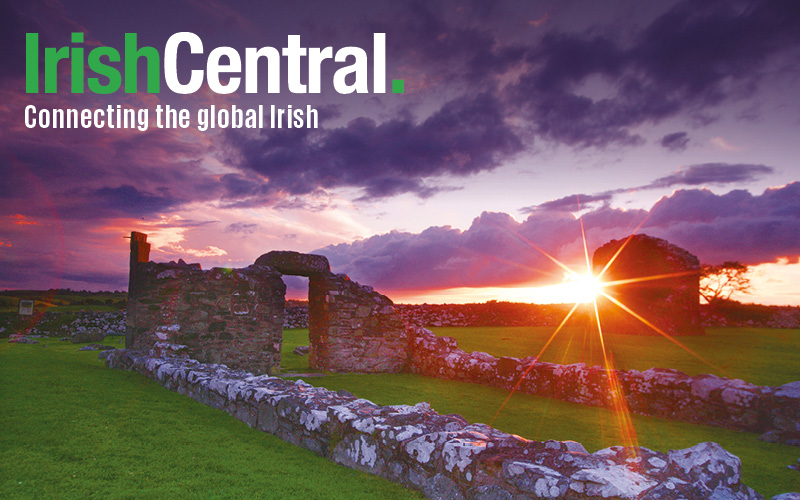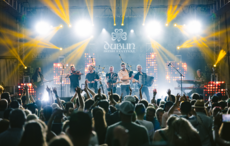Thanks to the fast feet of Michael Flatley and the Riverdance crew, there was a time in the not too distant past when Irish was not only a nationality, but a brand that people slapped on anything and everything for its cool cache. The show made our culture a hot property, casting a wide net beyond the shores of Ireland to capture the imagination of the world stage.
Like most things in fickle fashion, tastes change, and Irishness seems to be as fashionable as white leather shoe/belt combinations. Nowadays, the world Celtic has emerged as "the new cool."
The Emerald Isle lasses might have had a shot on PBS during March if they named themselves Irish Woman, but they can play all year long when they assume the name Celtic Woman. Recently, Phil Coulter, one of our best ambassadors of Irish music ever produced on green soil, launched Celtic Thunder this year. Isn't "Irish thunder" flashy, too?
Even we have stopped using our country as a hip adjective. Wouldn't an Irish Tiger growl just as loud as a Celtic Tiger when describing the roaring economy of our native land?
So, what does Celtic mean nowadays? I found as good a definition as any when I logged onto Wikipedia:
Celts is a modern term used to describe any of the European peoples who spoke, or speak, a Celtic language. The term is also used in a wider sense to describe the modern descendants of those peoples, notably those who participate in a Celtic culture. Celts were a diverse group of independent, indigenous tribal societies.
Those societies might include Scotland, Ireland, Wales, the Galicia region of Spain, Cornwall, Asturias, Isle of Man, and Brittany, but U.S. census data claims that the Irish and Scots make up the vast majority of the tens of millions of Celtic descendants on this side of the Atlantic.
To get a pulse on what Celtic means for culture in general and Irish music in particular, I visited the Celebration of Celts Festival in Chatham, New York, a Catskill town about two hours north of Manhattan (celebrationofcelts.com).
All of the Celtic nations were represented here, which made for a fascinating parade of both familiarity and outer fringe at the Columbia County Fairgrounds. Traditional Irish stepdancers tapped delightedly onstage at the CelticLounge.com tent as traditional Irish musicians played reels and "Roddy McCulay," while pipes and drums from Scotland marched down the main thoroughfare outside.
On the other end of the spectrum, barefoot people dressed in peasant garb, tartans and animal pelts cooked bread and chicken from fires started in holes dug into the earth in an attempt to recreate conditions in another time and place. Wiccan women and druids wore ornate Celtic knotted finery as they converged with others who reveled in dungeons and dragons mythology.
To each his own, but based on the many velvet hooded capes that were being worn, I wondered aloud why so many innocent drapes had to die for the cause!
Black 47's Larry Kirwan was honored by the committee as Celt of the Year for his contribution to Celtic culture through his music, his Celtic Crush show on Sirius, and his literary work.
"Celtic culture is alive and well here in the States, but I accept this award on behalf of the undocumented who are trying the make a life for themselves under the threat of our outdated immigration polices," said Kirwan as he accepted the award.
Black 47 would go on to close the show on the second day of the festival with a set peppered with songs from Iraq, the provocative collection of tunes that are postcards from the battlefield. With a reporter's eye for detail, Kirwan recounts the horror of war on tracks like the bluesy "Sadr City" and the hope of seeing home that sees the soldier through on songs like "Sunrise in Brooklyn."
Coyote Run, a tireless touring band out of Virginia that travels Ireland and the East Coast extensively, thrilled the crowd with a funky blend of hard driving Irishness. If the Red Hot Chili Peppers wore kilts instead of socks over their privates, they might look and sound something like this.
Backed by a band that blends traditional sounds with hard driving rock and lyrics stuffed with literature references, lead singer David Doersch kept the crowd entertained with stories of witches being burned at the stake (honestly, it was entertaining! You had to be there, I guess).
Doug Bischoff stole the show with a tour de force performance on familiar instruments like guitar, bagpipes, whistles and mandolin, as well as exotic instruments like the long horn known as the didgeridoo and the dulcimer. For more information on this great band, log onto coyoterun.com.
They were joined by Twisted Tassels, a band of gypsy looking women who mesmerized the crowd with their interpretative Celtic belly dancing. Isn't belly dancing a Middle Eastern delicacy?
"Who cares?" asked the lead dancer defiantly, pointing to the Celtic knots painted on her flawless skin. "We're expressing our pride in our heritage through dance and having a blast doing it." It's hard to argue with a woman who moves in mysterious ways!
One of the most fascinating Irishmen I encountered in this Celtic stew was Saratoga resident Kevin McKrell. Many followers of Irish music over the last few decades know him as the founding member of some very popular Irish rock and folk bands, including Donnybrook Fair, the Celtic Bluegrass Band and the McKrells.
He has shared the stage with The Kingston Trio, Mary Black, Solas, and Allison Krause, and his songs have been recorded by many Irish favorites, including the Furey Brothers and Seamus Kennedy, Scottish favorites North Sea Gas, Hair of the Dog, and folk giants the Kingston Trio.
At the Celebration of Celts festival, McKrell's daughter Katie provided sweet harmonies to his original folk tunes and spirited renditions of the Saw Doctors' "Green and Red of Mayo" and "Clare Island."
"I love Clare, which is why I sing those songs," explains McKrell, whose family hails from Dundalk. He frequently visits Ireland by himself and with tour groups that he runs.
"My father always said you never make any money working," he said with a wink and a laugh before bounding up to the stage for another crowd-pleasing set.
His artistry could be viewed onstage and off, as a table chock full of his portraits and stone carvings shared space with his CDs. According to McKrell, his painting career began in the throes of illness. A three pack a day cigarette habit collapsed his lungs after a performance, forcing the singer to stay on his back for months as he recovered.
"I had a lot of pent up energy and just began painting out of boredom," he explains. "My first attempts were pretty horrible, but eventually I landed on a style that works for me."
The style worked for a lot of people. He did a brisk business at the table with his colorful interpretations of colorful characters like Madame Bridget, a tinker fortune teller who plies her trade on the cobblestone streets of Galway.
"Jesus, I look old and fat," was the critique McKrell received from his subject when he displayed her likeness during a recent trip to Ireland.
While recuperating, he found that writing on his computer was something that was not too taxing, and that resulted in a number of entertaining short stories and a book.
The man's talent seems endless. You can see what I mean by logging onto KMckrell.com to view his artwork and photography, and to listen to snippets of his music.
The Irishness might have been absorbed into the body of Celtic nations lately, but if the Celebration of Celts festival was any indication, it is a shamrock shaped heart that keeps the beat going and the lifeblood coursing through this blended culture!




Comments